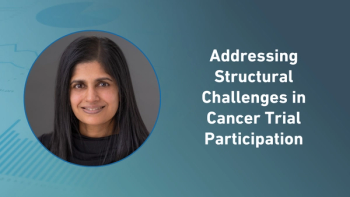
The Trial of the Future
Clinical trials of the future may be closer than we think as we strive to deliver smarter, faster and more cost effective treatment to patients. The data exists to make this possible, now we must change our thought process to meet the needs of patients and sponsors.
How secondary data could add speed and accuracy to future trial designs
May 20 is
International Clinical Trials Day
, a day in which we celebrate the great achievements of clinical researchers who bring life-saving treatments to fruition, and acknowledge the work we are doing today to make the trials of the future even more effective. For many of us, the key to that efficiency is speed. We all want to deliver smarter, faster and more cost-sensitive clinical trials so that we can get treatments to patients sooner and at less cost. By integrating evidence earlier in the clinical research process, we can help make this vision a reality.
Design with the end in mind
Leveraging secondary data, including electronic health records (EHR) or electronic medical records(EMR), claims data, prescription data and other data sources during the planning stage of a trial enables sponsors to optimize protocol designs and to reduce the risk against unnecessary, downstream protocol modifications. We consider this a “defensive design” approach because it provides study leaders with insight into the patient’s disease journey and treatment pathways, and they can use this data to make practical, pragmatic decisions about protocol design and execution. This approach can also shed light on issues that can negatively impact the trial downstream, such as overly restrictive inclusion/exclusion criteria that will impede patient enrollment and extend timelines. Pulling in evidence-based data collection earlier in the trial process also provides “offensive design” benefits. While most trial leaders understand the regulatory requirements needed to achieve product approval, they may not have that level of clarity around the expectations of payers, Health Technology Assessment (HTA) groups, and the providers who may ultimately prescribe these drugs. Too often, trial leaders don’t even consider the myriad needs of these stakeholders until late phase research, when it becomes far more costly and time consuming to gather the evidence needed to support pricing expectations and convince payers and providers of the real-world value of their treatment. When trial leaders research the expectations of all stakeholders from the outset of the trial, they ask better questions, which enables them to gather more meaningful evidence and identify the patient important outcomes and related endpoints that stakeholders will need to make informed decisions about the value of the product. Importantly, earlier and more proactive comprehensive evidence planning in clinical development can provide more robust pre-market scientific awareness, well before product launch.
Data-driven site identification and patient recruitment
In addition to optimizing protocol development, secondary data can be leveraged to accelerate site identification and patient enrollment. By harnessing the power of secondary data insights and associated analytical tools, we can obtain a more accurate picture of how many patients an investigator can expect to recruit into a specific trial, assuming the exact inclusion and exclusion criterion of the protocol. Simply put, robust secondary data (i.e. electronic health records, claims data, prescription records, etc.) and analytical tools can help point us to the right investigational sites that have the right patient populations for a specific protocol. The ability to leverage secondary data will help to accelerate patient enrollment. In fact, poor patient recruitment is one of the most common reasons for clinical trial failure. The trial of the future has to be designed and implemented smarter, faster and more cost efficiently if we are going to meet the dynamic needs of patients and sponsors. The data exists to make that possible, now we just need to change the way we think about trial planning so we can make the most of these valuable tools.
Cynthia Verst
, PhamD, MS is the president of Clinical Operations at Quintiles
Newsletter
Stay current in clinical research with Applied Clinical Trials, providing expert insights, regulatory updates, and practical strategies for successful clinical trial design and execution.




